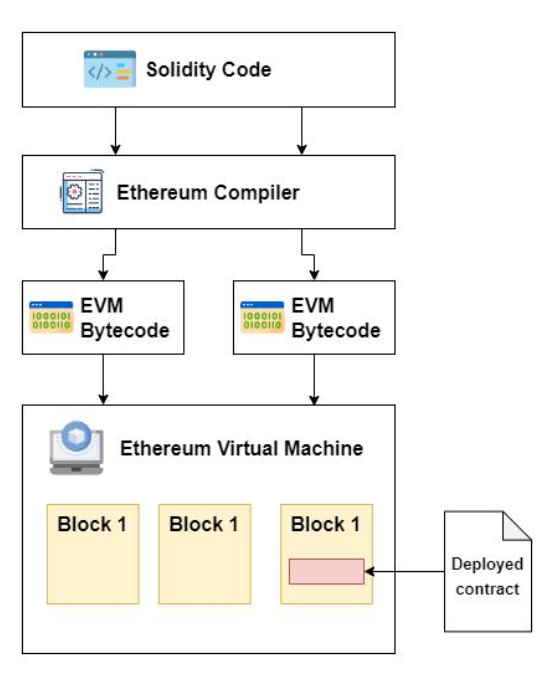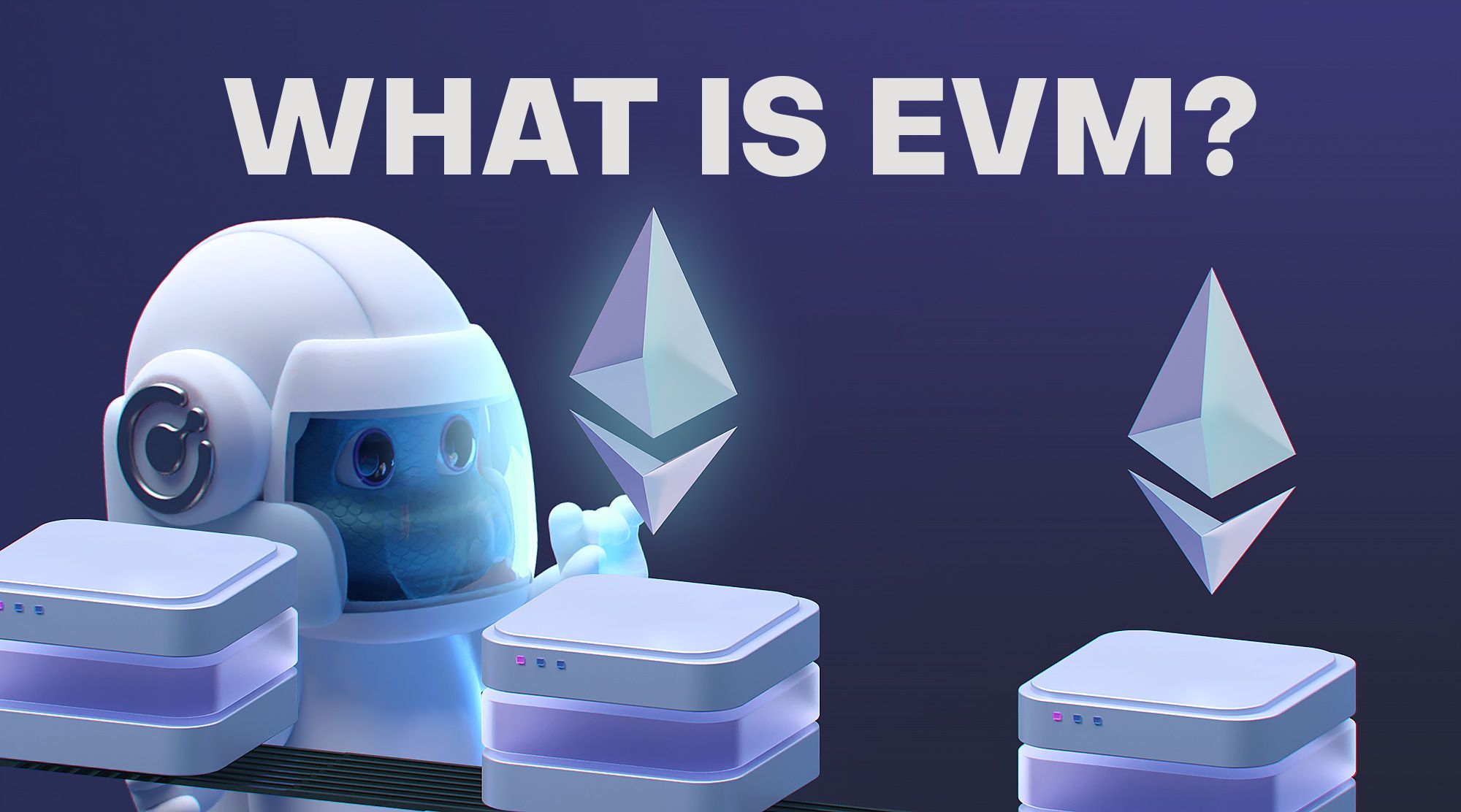The Ethereum Virtual Machine (EVM) serves as the heart of the Ethereum blockchain, orchestrating the execution of smart contracts and fueling the decentralized landscape.
In this in-depth exploration, we delve into the technical intricacies, benefits, challenges, and prospects of EVM, offering critical insights for blockchain developers and enthusiasts alike.
What is EVM?
At its core, the Ethereum Virtual Machine is a virtual machine (a.k.a. cloud computer) that serves as a decentralized runtime environment designed to execute smart contracts. These self-executing contracts enable trustless and tamper-resistant transactions, laying the foundation for a revolutionary shift in decentralized application (DApp) development.
Besides the Ethereum blockchain network, several blockchains are EVM-compatible. This means they operate using the same standards and protocols as the Ethereum network. Examples include BNB Chain, Polygon, Avalanche, and Fantom, among others.
The Technical Makeup of EVM
EVM's architecture consists of fundamental components like the stack, memory, storage, and execution environment. The stack manages data during execution, memory stores temporary variables, and storage stores persistent contract data. The execution environment ensures the seamless processing of transactions through a consensus mechanism, fostering a secure and efficient platform.
How EVM Works with Smart Contracts and DApps
EVM operates as the catalyst for processing smart contracts, enabling their execution on the Ethereum blockchain. Smart contracts, written in languages like Solidity, are self-executing and enforceable agreements, automating processes and transactions without intermediaries. Decentralized applications (DApps) leverage the decentralized nature of EVM, providing users with enhanced security and transparency.

Benefits and Limitations of Ethereum Virtual Machine
Using EVM comes with both advantages and disadvantages for developers and users alike.
Benefits
EVM's advantages are multifaceted, encompassing transparency, security, and interoperability. Its open-source nature encourages collaborative development, fostering a vibrant ecosystem for blockchain projects.
Limitations
Despite its strengths, EVM faces challenges. For example, it grapples with scalability and performance issues due to gas limits. Scalability is influenced by state growth and full node requirements, impacting the overall performance of the system. Additionally, challenges in interoperability and upgradeability necessitate a focus on compatibility and streamlined processes to ensure smooth operations.
Deep Dive into EVM's Operation and Functionality
Now, let’s look at how EVM works.
Important Functions and Features of EVM
EVM executes bytecode, a set of instructions generated by compiling smart contracts. This ensures consistency across all nodes in the Ethereum network, as each node independently processes and verifies transactions. Gas, a transaction fee, is used to allocate resources and prevent abuse, maintaining network integrity.
Understanding EVM’s Interaction with the Ethereum Network
EVM interacts with the Ethereum network through nodes, which validate transactions and contribute to its Proof of Stake consensus mechanism. Nodes execute smart contracts and store the entire transaction history, contributing to the decentralized and trustless nature of the blockchain.
Practical Use Cases and Implementations of EVM:
EVM finds diverse applications across various industries, showcasing its versatility and real-world impact. For example, decentralized Finance (DeFi) projects leverage EVM to power applications such as peer-to-peer lending and decentralized exchanges (DEXs).
The Future of Ethereum Virtual Machines
The landscape of blockchain technology is dynamic, and EVM adapts to emerging trends to enhance its capabilities. Layer 2 solutions, such as optimistic rollups and zk-rollups, aim to improve scalability by processing transactions off-chain and then submitting a single proof to the Ethereum mainnet.
Continuous improvements and community-driven developments shape the evolving landscape of EVM. Upgrades and optimizations, proposed through Ethereum Improvement Proposals (EIPs), demonstrate the commitment to enhancing the performance, security, and flexibility of EVM.
EVM's Impact on Blockchain Development and Adoption
Blockchain developers can leverage EVM's capabilities through strategic approaches. Optimizing smart contracts for gas efficiency, exploring layer 2 scaling solutions, and actively participating in the Ethereum community contribute to the successful integration of EVM into blockchain projects.
EVM's user-friendly environment and robust features have significantly contributed to the widespread adoption of blockchain technology. As the go-to engine for decentralized applications, EVM plays a pivotal role in fostering the development of many popular crypto ecosystems.
Key Takeaways on Ethereum Virtual Machines
EVM stands as the linchpin of Ethereum, providing a secure and efficient platform for the execution of smart contracts and decentralized applications. Its fostering of trustless transactions and enhancing transparency underscores its importance in the blockchain realm.
As we navigate the dynamic landscape of blockchain technology, EVM remains a stalwart force, driving innovation and shaping the decentralized future.
Its significance extends beyond its technical prowess, encapsulating the ethos of trustless, transparent, and collaborative blockchain ecosystems.
HODL and Trade Crypto with Komodo Wallet (web)
Komodo Wallet is a non-custodial wallet, decentralized exchange, and crypto bridge that supports the Ethereum network and numerous other EVM-compatible blockchain networks.
Try Komodo Wallet today!

